Chimeras and Corporeal Minds <<<
"As one examines carefully this fleeting and permanent reality, one has the impression of exploring the night-side of societies, a night longer than their days, an obscure sea from which successive institutions emerges, an oceanic immensity of which socioeconomic and political structures appear as ephemeral islands." Michel de Certeau 1
Existing as nomads, artists are able to re-appropriate the means of artistic production and locate themselves, temporally, at the center of the production of sense. 2How artist as political subjects are able to change conceptions concerning production, circulation, and consumption of the art object? What is paradoxical here is the fact that, in many cases, we are facing an absence of the art object or at least, a re-elaboration of its means and ends. We are witnessing how the everyday has been taken over the art world and vice versa. 3
Such progression is performed by a minority of artists that "have no model" because they live as nomads, permeating not only artistic sites, but also non artistic sites. This minority of artists (that could become a multitude), in terms of Gilles Deleuze, are becoming "process" (a flow); they are lines of fight. 4 Their presence is noticed not only in cityscapes but also in the virtualscapes of the global world. They are a horde that flows freely across the crevices of Empire.
Presenting only few examples of these practices (I am calling them chimeras ). The text will try to grasp some of the points raised by thinkers of the multitude. The artists in this exploration, could constitute a war machine against the capture machines of contemporary society, unfortunately they do not because they cannot be constituted fully. At times, they are treated as exotic and/or naive, sometimes as minor voices, some other times they retreat to the margins of the social sphere. When they are present in the public arena they seem fragile and unimportant. But at the same time they are part of agendas that are pushing for the inclusion of a wide-range of views and experiences of the world.
Artist: ANDRES CAYCEDO / Colombia-Australia
Title: "Shoping Makes you Free" Series (2002-2006)
Digital images -print-outs of computer generated images.
Short Bio: Born in Bogotá, studied visual arts at Los Andes University in Bogotá. Currently lives and works in Crains, Northen Australia. More on Andres Caycedo: Lewiston, Evelyn. "Discussions with an Artist: Andres Caycedo ("The New Bohemians"--Art, Politics and Place, " etropic: electronic journal of multidisciplinary studies in the tropics , Vol 5(2006),
http://www.jcu.edu.au/etropic/ET3/LewistonCaycedo.htm
The ever intrusive mass media; television and printed image, is without a doubt the most effective means to control and shape the collective conscience. Individuals and societies realized their needs through flashy and colorful advertisement, corporations that invest obscene amounts of money to attract as many consumers as it is possible. Entire populations are molded and softened to support the murderous policies of their governments by the use of a continuous and relentless brain wash about of our self-righteous, and moral stand, and the media as a whole including the "free press" is crucial in delivering the morphine. Catchy slogans, national heroes, embarrassing mausoleums, create a sense of belonging and identity to the overfed and increasingly ignorant masses of "THE WEST", no questioning allowed. The underlying reality is never mentioned and therefore there is no interest beyond the evening news. There is comfort in deception.
Education and religion serve no other purpose than to consolidate in the young ones this colossal and monstrous trend. Hypocritical precepts and moral purposes are the order of the day in schools and homes. Thou shall not kill, but war is worshiped, thou shall not steal, but that is what affluent nations do to poor nations, thou shall love one another and it is racism and hatred the driving force of our moral stand to show others how "savage" they are. Perhaps we should try some reverse psychology and start teaching that it is good to kill, to rape, to lie and to steal, to see if everyone finally realizes the downward spiral of destruction we are heading into. Political art has a lot to say in this new Dark Ages.
1. Caicedo / Caníbal (2003) Digital image
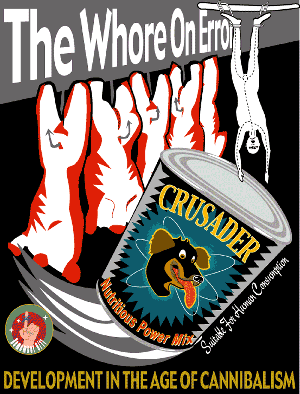
2. Caicedo / Error Map Identification (2004) Digital image
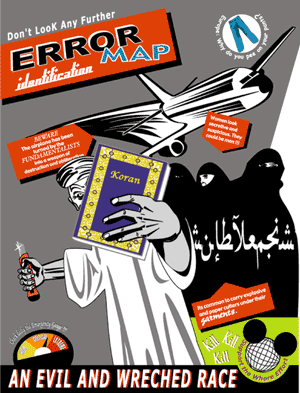
3. Caicedo / Jihad a la Western (2003) Digital image
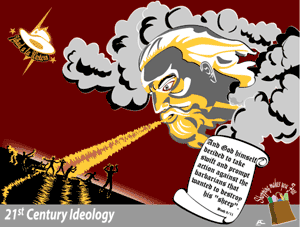
Website : http://www.users.bigpond.com/moscoca/ posters/selection.html
Email: moscoca@bigpond.com
Artist: FERNANDO PERTUZ / Colombia
Title: "Un Mundo Mejor - Lista de Personas desaparecidas" Interactive performance
Short Bio. "In 1992 I began to make works where interactivity, activism and community work are central part in the creation process. Proposing new languages of communication, establishing dialogues, reflections, and plastic results through interaction with people; where the spoken word and thought are malleable raw material that allows transformation of attitudes of the yet mobile society. In order to defend life it is necessary to do it from life itself, the war we lived in has to be fought with our brushes, cameras, and our bodies, also with our ideas, the true battle is ideological and sensorial. I art as medium to create a new attitude towards life." Curriculum vitae: http://www.fernandopertuz.com/PERTUZvida.htm
"listadepersonas.org is a work-in-progress, that wishes to establish a public data base, independent, universal and ample of people affected by violence and other social problems. In constructing a horizontal community online the project, more than diffusion, is a space of interchange of ideas, of opinions, opened to everybody; in doing so it intents to produce a politically active and effective position a potential germ for a 'direct electronic democracy'...
The non-hierarchical spaces of the net ignore old concepts of "authorship" and "property" and favor others as those of "encounter", "fluidity", "connectivity" and "transit", a circular process of reproduction, demanding artistic practices to produce criteria and knowledge, a place where the conflicts can be solved by another way and not the one of war.
The Web it is used as medium, tool, support, and means. Mixing resources like posted photos, prerecorded videos streaming or, sounds etc..."
The project has been evolving from Pertuz' performance activities developed since 1992. The performance allows him to interact with other people, en "lista-de-personas" (and related projects) live broadcast gives possibilities similar to "real" interaction. Now one moves to another reality, the virtual. Video, sound, texts, and image establish spaces of dialogue and questioning. The audio-visual and oral interaction maintains a parallel presence and becomes a mirror and a document that amplify the concepts of time and space during the performance.
Resources like messenger, video-conference, chat, email, prerecorded videos, are performer's tools, establishing spaces for encounter and dialogue.
The project is complemented with street actions. These actions and the reactions of the people in the street are registered in video and photographs, in order to document and to give testimony of what people feel and think. This material is selected, edited and transformed to web-format to be published.
The performance "Death Round Throughout" (2004-06) is an antecedent connecting Pertuz overal project. It produced a ground of interaction with victims of violence; Pertuz gave away thousands of flyers in streets of Latin American cities (and participated in public and private events). He invited by this means people to send names of relatives who died in violent-acts. With this material he constructed an initial Web page that gives testimony of these events. It became a memory (like a virtual monument) to the missing subjects and a call of attention on the holocaust of contemporary times.
f1. Pertuz / La muerte ronda por todas partes , street action (2006). Performance
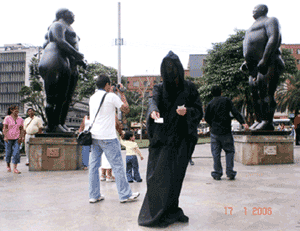
2. Pertuz / La muerte ronda por todas partes , Gallery intalation (2006)
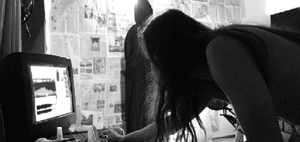
3. Pertuz / La muerte ronda por todas partes - Lista de Personas. Flyer
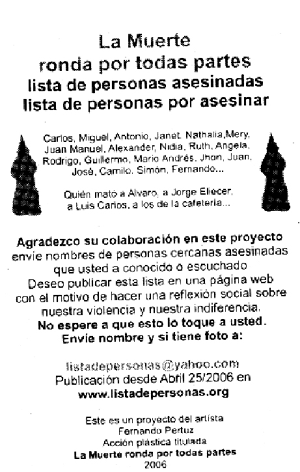
Sitio web: http://www.fernandopertuz.com/menupertuz.htm
Emails. fernandopertuz@yahoo.es
Artist: ANDALUCIA KNOLL / U.S.A
Title: No title (various print-outs and objects)
Short Bio. Nace en New York, vive y trabaja en Pittsburgh, P.A, USA. / Born in New York. Live and work in Pittsburg, PA. USA.
Activismo social / Social Activism- interactive performance
What does it mean to not work in a capitalist society? With so much social emphasis put on jobs or "what we do" for a living people who do not work, in the traditional sense of the term, are seen as outcasts or slackers. What about people who are redefining the work ethic, who are living their lives in ways that do not require a wage job? Raoul Vaneigm wrote in The Revolution of Everyday Life (1967) that "in an industrial society which confuses work and productivity the necessity of producing has always been an enemy of the desire to create...The imperatives of production are the imperatives of survival; from now on people want to live, not just survive."
Andalusia Knoll is a Pittsburgh-based activist who is following her "desire to create" and to live by not working a traditional job. Although she does not "work" she is busy with lots of vibrant projects.
"I've only worked really short-time jobs and I guess I've been able to structure my life in a way that I don't need that much money. I guess I got into doing things like this because there is a culture of punk-traveler-squatter people... One thing that's happened is that I essentially have a job I just don't get paid for it. I help run a recycled bike cooperative (Free Ride). For occupation I generally write 'bike mechanic.' That is more or less my job. I do it at least 30 hours a week, every week. So, it's called Free Ride. It's a recycled bike cooperative and our focus is to teach people how to fix bikes. But we also have people come and volunteer and they can earn bikes by doing work trade. With the used bikes, there's nowhere else people can get them in the city. Otherwise they just wouldn't get a bike but they know they can get one from us. That will put another person on a bike which is one of our missions...
Another thing that I work on is doing an Indymedia news show called 'Rustbelt Radio' (now with a community TV program). It's a weekly collaborative news magazine, mostly about Pittsburgh social and political issues but also global news on pace, social justice, environmentalist law, and advocacy programs . So I'm a co-host of the show and also do a lot of the interviews and editing for it. And I also do a books-to-prisoners program (Booke'm) and I'm involved in a prisoner art group called the 'Prison Poster Project.'
The Prison Poster Project (PPP) is a collective of artists & activists working in collaboration with prisoners across the U.S. Our mission is to create a public education tool to expose how the prison industrial complex affects our diverse communities and to challenge current reliance on prisons as a solution to social problems. With imprisoned artists, we are creating a portable mural that will be used by prison activists, educators, the incarcerated and community leaders. We choose to use art because art makes knowledge accessible across age, race, class, gender and geographic lines. Through this project, we can amplify the voices of many that go unheard and generate visions of a more just and caring world."
1. Knoll / Free Ride (2002). Screening
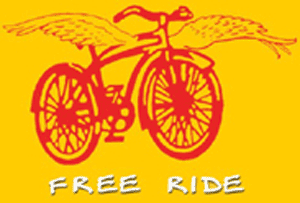
2. Knoll / Rustbelt Radio (2003). Sticker
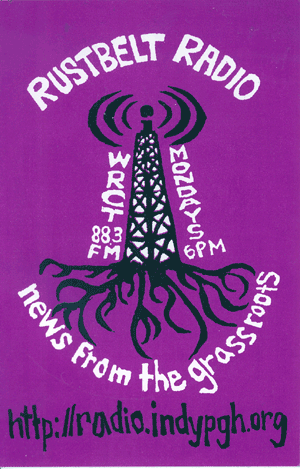
3. Knoll / Collective (2007) installation InteractivA'07
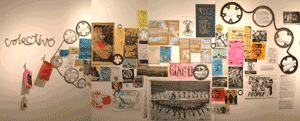
Sitio web : VIDEO ON LINE
: http://media.indypgh.org/uploads/2007/06/baglady.mov
1 @andalusi@ The Baglady
by Miguel Rojas Sotelo
Documentary piece on the artistic practices of an (i)ndy media
artist-activist. The video functions as a pseudo-portrait of an
imaginary-real artist that deals with a counter systemic way to
produce art and communication in an urban setting in contemporary
United States. (Duration: 30 min)
Free Ride visit: http://www.freeridepgh.org/
Rust Belt Radio visit: http://indypgh.org/features/radio/
Prision Poster Project visit:
http://www.prisonposterproject.com/
Interview: By Matt Dineen
http://towardfreedom.com/home/content/view/728/79/
Emails. baglady@riseup.net
Artist: JOSE MIGUEL GONZALEZ CASANOVA / MEXICO Title: BID / IDB (Banco Intersubjetivo de Deseo / Intersubjective Bank of Desire)
Social Activism- interactive virtual performance
Short Bio. José Miguel González Casanova, Mexico. Desde 1998 Director del Banco Intersubjetivo de Deseos.
Jose Miguel Gonzalez-Casanova's Inter-subjective Bank of Desire, IBD (in Spanish -Banco Inter-subjetivo de Deseos, BID) founded in 1998 acts as a virtual platform supported by the exchange of wishes and desires. Collected initially by Casanova in his travels across Latin America, today they are collected through the web. Casanova, a multidisciplinary artist from Mexico, analyses the role of art within the structure ruled by the dictatorship of the market. He questions the ends and means of capitalist societies, based on limited frames of production, consumption, and surplus; in other words, in processes of information and accumulation. He affirms that art makes possible heterogeneous ways to conceive life throughout explorations and interchanges of desire and vital experience. He criticizes the fact that Art (with capital A) is no more than a miniscule part of the world of entertainment, which keeps its condition of fetish for the grace of the elites, and is in the process of being completely domesticated as a product of the mass culture. His work allows us to see the density of the cultural complex. At the same time, it makes clear a path to overcome the control created by a single system of value and interchange. Casanova is investing in desire, pride, and utopia; his bank functions in a virtual site <www.bid.com.mx> and juxtaposes its functions and intents emulating the establishment. In a double game IDB produces currency, a coin that is going to be exchange by a desire. Its image recognizes the pre-Columbian serpent as prehistory of an economy of exchange where desire and gift culture become a valuable icon for trade in contemporary times. A commentary on the instability of the local currencies and the almost schizophrenia for dollars is replaced by the value of a wish in developing societies. The savings of the bank are share thanks to free access to its assets and do not predict any future (in terms of development), instead established a net of connections among clients that dream about a better to come. In the past the BID had physical manifestations in galleries and museums as well as offices and street actions (as marketing) in various cities of Latin America. In that way the BID becomes a bizarre institution one that not acting in the physical but in the virtual talk about the possible.
1. Gonzalez/ Serpent-BID - Aztec Serpent and Logo (coin) for the BID.mx
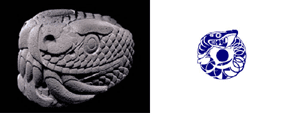
2. Gonzalez/ Personal Card
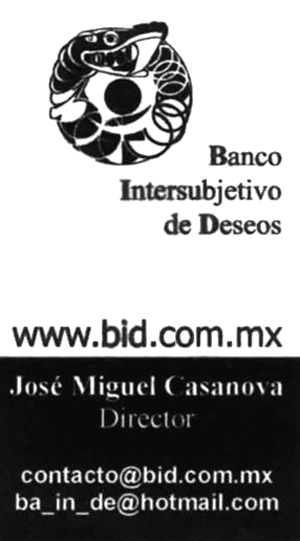
3. Gonzalez/ Desire Charts (From the BID web site)
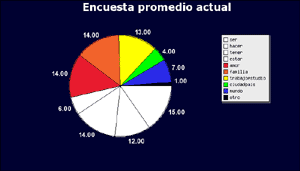
Sitio web : http://www.bid.com.mx
Email: contacto@bid.com.mx
1 Michel de Certeau, The Practice of the Everyday Life (Berkeley : University of California Press, 1984)
2 Derived from the list of "political demands" of the multitude; Telos (reappropiation), is one of the demands that will signalize the raise of the political subjectivity of the multitudes. In Antonio Negri and Michael Hard, Empire (Cambridge, London: Harvard University Press, 2000), pg.402-406
3 I am proposing here that the practice of making art is part of what Negri and Hardt called "Living Labor" and/or "Immaterial Labor Power". I suggest that such notions are inherent to the production of art and that they are categories included in its historical practice. For living labor (affective labor) see Antonio Negri and Michael Hardt's use of the concept "Immaterial Labor Power", derived from Marx's notion of General Intellect, and Maurizio Lazarato's notion of immaterial labor. Antonio Negri and Michael Hard, Empire (Cambridge, London: Harvard University Press, 2000), pg. 29, 53, 290, 292, 364, 365.
4 Lines of flight are everywhere. They constitute the available means of escape from the forces of repression and stratification. Even the most intense strata are riddled with lines of flight. "Territorialities, then, are shot through with lines of flight testifying to the presence within them of movements of deterritorialization and reterritorialization." In: Gilles Deleuze and Feliz Guattari, A Thousand Plateaus (Minneapolis: University of Minnesota Press, 1987), pg. 55 |



